Social and economic development. Рубрика в журнале - Arctic and North
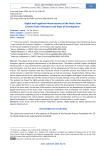
Статья научная
The subject of the article is the analysis of the current state of research and practice in the field of transport, logistics and digital infrastructures in the Russian Arctic. The authors consider logistic and digital infrastructures as key communication subsystems that ensure the movement of material values, people and information, and thus serve as a prerequisite for the development of the macro-region under consideration. The research methods used were literature review of scientific sources and analysis of the obtained material. A systematic literature mapping was carried out on Scopus, Google Scholar, Elibrary databases. Aspects of the Arctic region development, including the role of logistics and digital infrastructures in this process, are described by scientific schools of Russia, Canada, Norway, China, USA and other countries. The analysis has shown the highly variable state of the subsystems under consideration depending on the specific region, as well as the lack of a comprehensive approach to their joint development and integration. It was stated that there is no such problem statement about the development of communication subsystems of the Arctic zone. On the basis of the analysis, the key directions for the development of logistics and digital infrastructure of the Arctic zone of the Russian Federation were formulated. The authors’ recommendations, apart from the obvious tasks of developing sea routes, building and modernizing roads, railways and airports, expanding access to broadband internet and other widely discussed measures, describe the need to integrate the communication subsystems under consideration and focus on the potential of digital technologies to replace and/or supplement the logistics infrastructure in certain aspects.
Бесплатно

Digitalization as a Factor for Development of the Target Arctic Subspaces
Статья научная
The Arctic zone of the Russian Federation is a rich, attractive, but hard-to-reach region. The authors of the article believe that the current level of development of digital and data technologies can make a constructive contribution to overcoming some of the challenges of Arctic conquest. Since the Russian Arctic is a complexly structured macro-region, the authors rely on the division of the Arctic into seven target subspaces. The paper identifies the requirements of the target Arctic subspaces for digital technologies that could facilitate the process of Arctic exploration. The paper used the results of previous research by colleagues, traditional methods of scientific analysis combined with an interdisciplinary approach, and an architectural approach to the design of socio-economic systems to identify the requirements of the identified subspaces. Based on the analysis of the collected and summarized materials, seven models of motivational extensions were constructed for each of the identified Arctic subspaces, summarizing information about the goal-setting of each subspace. Among other goal-setting factors, the requirements for digital technology services that would contribute to the development of each subspace were formulated. The resulting requirements contain both digital support needs common to all subspaces and those specific to each subspace due to its characteristics. As a result, the directions for effective implementation and use of digital technologies in the Russian Arctic were summarized.
Бесплатно
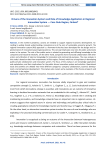
Статья научная
In the northern periphery, actions are needed to support regional economic development. According to widely shared understanding, innovations are at the core of sustainable economic growth. The regional innovation system (RIS) approach is a framework that has been developed for the design and implementation of innovation-based regional policies. This concept implicates new roles for public and private actors in the system. The role of the public sector is related to generating and diffusing knowledge to the companies and industrial networks. On the other hand, companies have increased collaboration with other actors and utilization of external knowledge for innovation and commercial purposes. The case analysis in this study is based on data from experiments in Oulu region, Finland, which has a long history in developing public-private collaboration and innovation system. The focus of the analysis is on knowledge application and exploitation, and their implications for the public driven innovation system and activities. Operational tools and activities are divided into three different categories: company collaboration, business development, and competence development. The analysis also reveals some examples of the future prospects and challenges in the region.
Бесплатно
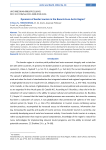
Dynamics of border tourism in the Barents Euro-Arctic Region
Статья научная
The article discusses the main types and characteristics of border tourism in the countries of the Barents region. It provides official statistics on the number of trips, the results of tourist motivation study and reveals the positive dynamics of border tourism development. The materials of the current study in-clude a review and comparative analysis with data obtained during research sessions since 2013 within the framework of the international program Bachelor of Northern Studies. According to the survey, the Barents region has a great potential for the development of tourism and positive motivation that contributes to international contacts. An analysis of the border tourism development dynamics has shown an increase in the demand in the tourism services market, the necessity to create programs focused on the needs of the target audience of buyers, and the active promotion of Russian tourism in the international market.
Бесплатно
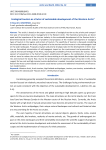
Ecological tourism as a factor of sustainable development of the Western Arctic
Статья научная
The article is based on the expert assessment of ecological tourism as the priority and competitive type of recreational nature management in the Western Arctic. The theoretical provisions are developed and the importance of the tourism industry in the sustainable development of the Russian Arctic is determined based on the analysis of problems and prospects of the modern development of ecological types of tourism in the regions and centers of tourism. The specificity of tourism is discussed considering the increased interest in the Arctic, the growth of cruise tourism and the increase in the anthropogenic load on the polar landscapes. Proposals are given and priority strategic tasks for the development of Arctic tourism are formulated: minimization of anthropogenic impact on the environment and preservation of the cultural and natural heritage of the Arctic, increasing the availability of Arctic territories for tourists. Development of competition in the field of transport, simplification of logistics, the combination of sea cruises with air travel to reduce the cost of travel for those wishing to visit the unique high-latitude Arctic territories and increase the tourist flow. Due to the predominance of expensive types of tourism in the Arctic, support for low-cost and high-income tourism destinations is needed. Innovative investment projects in the field of the Arctic tourism based on clusters could attract tourists and additional investments in infrastructure modernization.
Бесплатно
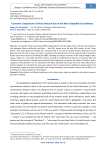
Economic Conjuncture of Arctic Natural Gas in the New Geopolitical Conditions
Статья научная
The special military operation (SMO) organically fits into the logic of the century-long confrontation between Russia and Britain, and later — the USA, known since the late 18th century as the “Great Game”. One of the goals of the SMO on a national scale is not only to restore Russia’s dominance in the Black Sea and the Sea of Azov, but also to counteract the achievement of such a goal by NATO countries. Russia uses various sources of funding the SMO, including oil and gas revenues of the Federal budget. Natural gas, unlike oil, is not under sanctions. There is nothing to compensate for the loss of revenues from the reduction of gas exports to Europe: practically all Russian pipelines (except for the Power of Siberia-1 with a capacity of only 38 billion m3) are oriented to the West; liquefied natural gas from the Yamal LNG and Sakhalin-2 projects is contracted for many years ahead. The EU countries have nothing to compensate for the lost volumes, except coal, but only Russian coal. Europe needs gas, Russia needs currency for the SMO, so it is necessary to find a solution to the problem.
Бесплатно

Статья научная
The study of economic processes in the regions of the Arctic Zone of the Russian Federation (AZRF) using economic-statistical modelling methods is an important area of Arctic research due to the possibility of displaying statistically significant relationships of economic processes and phenomena and forecasting economic dynamics, but the potential of such modelling is limited by the specificity of the processes of a number of regional economies in the Arctic, distorted by the increased state presence and active management intervention in the Arctic. Therefore, economic and statistical studies of the Russian Arctic regions are rare in relation to the popularity of the Arctic topics in regional studies. The aim of the study is economic- statistical modelling of production processes in the regions of the AZRF using the production function (PF) toolkit. At the first stage, the analysis of correlations between GRP and factors of production was carried out, on the basis of which the AZRF regions were divided into three groups: 1) regions in which the mutual behavior of the main factors of production (labor and capital) fits into the generally accepted concepts (the Russian Federation as a whole, the Nenets Autonomous Okrug, the Yamalo-Nenets Autonomous Okrug, the Republic of Sakha (Yakutia)); 2) regions in which the mutual behavior of the main factors of production does not fit into the classical concepts: there is a sufficiently strong positive relationship with only one of the factors of production (the Arkhangelsk Oblast, the Krasnoyarsk Krai, the Komi Republic); 3) regions for which there is no sufficiently strong positive relationship between GRP and factors of production (the Murmansk Oblast, the Republic of Karelia, the Chukotka Autonomous Okrug). At the second stage, at least 4 PF models were built for the regions of group 1 (the best model was selected using the Akaike information criterion adjusted for small samples). For the regions of group 2, Cobb-Douglas PF models and single-factor models were built, in which a factor with a positive relationship with GRP was included. The construction of PF models for the regions of group 3 is impossible.
Бесплатно
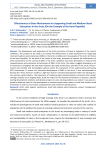
Статья научная
The development and exploration of the Arctic territories of Russia is important in the current conditions. The purpose of the study is to analyze the effectiveness of state mechanisms for supporting small and medium-sized enterprises (SMEs) in the Arctic conditions (on the example of the Arctic territories of the Komi Republic). On the basis of the results of the study, proposals to improve the effectiveness of these mechanisms for the survival of SMEs in the Arctic conditions have been developed. To improve the competitiveness and investment attractiveness of SMEs in the Arctic, the authors suggest developing a set of measures to strengthen the interaction between the state and business, primarily in the social, environmental and scientific and technological spheres within the framework of the public-private partnership (PPP) mechanism. To ensure the innovative development of SMEs in the Arctic, it was recommended to develop the “Arctic Venture” model as a high-tech tool for innovative development within the existing Russian venture capital industry. The importance of creating project-oriented business structures that conduct strategic analyses on an ongoing basis, study the impact of the external environment on business, identify existing development problems and develop projects to solve existing problems was noted. It was also proposed to elaborate tools for the development of corporate governance system in small and medium-sized enterprises in order to ensure their competitiveness and investment attractiveness.
Бесплатно
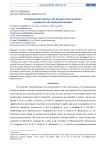
Entrepreneurial activity in the Russian Arctic territories compared to the All-Russian situation
Статья научная
The paper considers the entrepreneurial activity of the Russian Arctic territories and reveals its specificity compared to the all-Russian situation. The relevance of the scientific task is determined by the fact that ensuring economic growth and social development of the Russian Arctic is impossible without the necessary strengthening of entrepreneurial activity. The search for a mechanism for managing Arctic entrepreneurship is currently an urgent scientific task. The paper presents the authors' estimates of the entrepreneurial activity of the Russian Arctic territories compared to the all-Russian situation. The authors present the classification of the territories of the Russian Federation and the Russian Arctic by the principal business activity related to the subject of the market manifesting it. It is argued the Arctic specificity, and local conditions determine the development of entrepreneurial activity in the Arctic for such market actors as business and the state. This feature allowed us to offer and justify recommendations to stimulate entrepreneurial activity regarding the belonging of the Arctic to a classification group.
Бесплатно
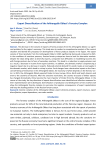
Export Diversification of the Arkhangelsk Oblast’s Forestry Complex
Статья научная
The decrease in the volume of exports of forest products from the Arkhangelsk Oblast is a significant problem for the region’s economy. This study aims to conduct a comprehensive analysis of the current situation and identify the prospects for development of forest products exports in the region. The export volume of forest products from the Arkhangelsk Oblast in 2023 significantly decreased compared to 2021. In the conditions of sanctions pressure, Russian forestry enterprises have to look for alternative markets. Despite the steps being taken to diversify exports, companies face difficulties in establishing business ties with foreign partners due to fears of secondary sanctions. This leads to a reduction in supply volumes and, as a result, a decrease in income from export activities. In addition, the domestic market is experiencing a negative impact due to a decrease in exports. Reduced external demand for wood creates an oversupply in the domestic market, which leads to a drop in prices. Such changes have a destructive impact on the financial well-being of enterprises in the Arkhangelsk Oblast, the economy of which depends on the forestry sector. In 2021, the Arkhangelsk Oblast exported timber to Asia, Europe, Africa, North and South America and even to the countries of Oceania. After the sanctions restrictions, the country structure of timber exports has changed dramatically. China became the main importer of timber from the Arkhangelsk Oblast. In the course of the study, the key directions of export diversification were identified and effective measures for their implementation were developed. Diversification of production and development of new markets will allow the Arkhangelsk forestry complex to overcome the negative consequences of export specialization and keep the leading positions in the Russian forestry sector.
Бесплатно
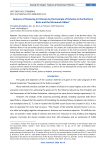
Статья научная
The purpose of the study is the rationale for creating a fisheries cluster in the Northern Basin. The analysis of the creation of classical clusters in foreign countries is carried out, information on the limited use of these structures is provided. The stages of clusterization of the fishing industry in Russia are considered. The reasons for the lack of implementation of numerous cluster projects are clarified. The main one is the refusal of fishing fleets to enter the cluster. The successful functioning of the fishery complex in the Northern Basin in the pre-market period is presented. The reasons for its destruction and the stagnation of enterprises and organizations' economies serving the main structures of the marine economic activity of fishing fleets are clarified. They are caused by a change in the structure of mining fleets, the development of uncontrolled export of fish products directly from the sea, with the departure of fishing vessels for repairs and maintenance to foreign ports. The practicality of creating a local fish cluster, the core of which will consist of fishing vessels with an incomplete cycle of processing aquatic biological resources and coastal fish processing enterprises, is justified. The proposed measures stimulate entry into the cluster. The study's practical significance lies in the creation of conditions for the deep processing of aquatic biological resources and the release of innovative fish products, as well as for the development of ship repair and other enterprises serving the fishing fleet.
Бесплатно
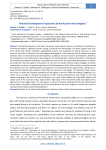
Financial Development Trajectories of the Russian Arctic Regions
Статья научная
Priority development of the Arctic territories is particularly relevant in conditions of unstable environmental balance, significant climate change, and territorial vulnerability. The Arctic regions have common natural and climatic conditions, geographical location, the availability of natural resources on their territory, the level of technical and technological development of the branches of the national economy, however, they are characterized by heterogeneous conditions of socio-economic development, therefore, the imbalances in the functioning of these regions are manifested more clearly. Elimination or levelling of the emerging interregional imbalances is an objective necessity for the sustainable development of regions, ensuring their financial stability. The authors, on the basis of private financial indices (budget, economic, investment), carried out a pinpoint adjustment of the development of the Arctic territories and determined the trajectories for the implementation and expansion of potential financial opportunities, taking into account the identified threats and drivers that affect the economy of the region. This approach made it possible, firstly, to assess the financial capabilities of the regions in terms of different aspects (budgetary, economic, etc.,); secondly, to identify the dynamics of their financial development; and, thirdly, to rank the regions according to the level of financial solvency. As a result, three clusters were identified: regions with a high value of the economic index; regions with a high value of the investment index and regions with a high value of the budget index. For each group, a vector of financial development has been determined, which makes it possible to effectively use all the possibilities of the Arctic regions to ensure their both social and financial and investment development.
Бесплатно
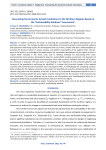
Статья научная
In modern conditions, the issues of assessing the sustainability of regional development are of particular relevance. The complex problems of interrelation of economic growth, environmental pollution and population well-being require the development and use of new, simpler and more understandable approaches for decision makers to assess, analyze, and predict sustainability at the regional level. The purpose of the article is to investigate the opportunities for sustainable development of the regions of the European North included in the Arctic zone, and to develop methods for forecasting their socio-environmental and economic development based on sustainability window assessment. The dynamics of changes in the relationship between environmental, social and economic indicators with the use of pollution functions is analyzed. The main factors contributing to the reduction of environmental pollution and increase of the population's well-being are identified. It is shown that structural changes in the regional economy and environmental investments have the greatest effect. A methodology for calculating sustainability windows for the regional economy is presented. The possibility of using the method has been demonstrated using data from the Republic of Karelia. A scenario of sustainable development based on the restriction of economic growth for some regions and the requirements for the structure of the economy has been developed. The results obtained can be used as an informational and methodological basis for assessing and elaborating sustainable development policies in the Arctic regions.
Бесплатно
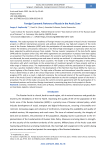
Foreign Economic Partners of Russia in the Arctic Zone
Статья научная
The study expresses the readiness of foreign investors to participate in Russia's Arctic innovation projects in difficult international economic and political conditions. Key high-tech projects of the Arctic zone of the Russian Federation (AZRF) with the participation of international economic partners are presented. The tendency of economic interaction in the field of high technologies is expressed, which has not been subjected to political pressure from outside. The key investor companies of the Asia-Pacific region (APR) and the European Union (EU), with which agreements on participation in projects have been signed, are presented. The intentions of the world powers for economic partnership in the Arctic projects of Russia are discussed, the most promising areas and areas of activity are outlined. It is determined that the dominant economic attention is shown by Asian countries. The leader is the People's Republic of China (PRC), interaction with which contributes to the acceleration of investment growth in these projects and has a wide range of industry areas. The implementation of AZRF projects with the participation of foreign partners has a positive multiplier effect on the development of the Northern Sea Route (NSR), the main economic highway of the Russian Arctic. The high value of Russian and international scientific research in the Arctic is determined, as well as the critical importance of the achievements of scientific and technological progress (STP), and as a result, a high-tech economy; the increased interest of the world powers in the work of the Arctic Council is indicated; the general attention to the thin ecological system of the Arctic is presented. The aim of the study is to assess the current economic agreements with the participation of international partners and to attract foreign investment in promising long-term Arctic projects in Russia.
Бесплатно
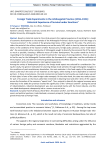
Статья научная
Based on historical material, the article presents the regional experience of searching for a model of economic development on the example of the Arkhangelsk Province's desire to get rid of the image of a “resource province” in the context of the growing importance of this region for the state. The article considers the period of the military-revolutionary era and the early NEP, which is short by historical standards, when, in the conditions of the inaction of other Russian ports, foreign policy sanctions, and a “trade blockade”, the economically active community of Arkhangelsk sought to diversify the economic life of the region as much as possible, choosing a different vector of further development. The author noted the forms of responding to the challenges of the era that forced look for new ways of solving problems. There is a desire to find its way for the Arkhangelsk Province within the framework of a single state, and the unification of the European, Ural, and Siberian territories gravitating towards the White Seaports. These issues should be considered in terms of only economic interregional cooperation. Among the variety of development projects, the foreign trade aspect was selected for consideration. During the study, the general motivation for planning foreign trade activities through Arkhangelsk changed. In the conditions of post-revolutionary devastation, the main motivator is the food supply of the population, which could return the value of raw materials to the region, while making it more dependent on external partners. In these circumstances, the local commercial and industrial community was ready to give up part of their rights in favor of the state foreign trade monopoly. On the other hand, the state was ready to transfer part of its powers so that local authorities interested in obtaining food and other items of life support ensure the formation of the necessary “export fund”. Thus, projects to diversify the regional economy were thwarted; in the 1920s the province retained the significance of the “all-Russia sawmill”; during the period of industrialization, industrial development was also associated mainly with the forest industry, and this one-sided development subsequently led to a severe structural crisis.
Бесплатно
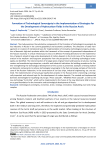
Статья научная
The study examines the substantive components of the formation of technological sovereignty by key industries in Russia in the current geopolitical and economic conditions. The directions of state management on creation of institutional basis for implementation of innovative technological projects, production of domestic high-tech products within the framework of the concept of guaranteed independence of the Russian economy in critical infrastructure areas are defined. Promising directions for the implementation of projects aimed at large-scale development of carbon deposits in the Arctic zone of the Russian Federation in the medium- and long-term perspective from the perspective of achieving technological sovereignty are identified. The interconnection of strategic plans of government and business structures, training centers and manufacturing enterprises, scientific and industrial institutions for building procedures for further strengthening the technological development of the country is presented. Examples of testing individual domestic components to achieve technological sovereignty in the fuel and energy complex of the Arctic zone of the Russian Federation, in the construction of ice-class ships, industrial engineering, etc. are outlined. The implementation of natural gas liquefaction projects in the Russian Arctic is becoming a strategically important and relevant topic for the development of carbon deposits. The created and implemented domestic technologies for liquefying natural gas “Arctic Cascade”, “Modified Arctic Cascade”, as well as the new technology “Arctic Mix”, which will be implemented in the future at the new Murmansk LNG terminal, are a good foundation for the innovative and technological development of Russia.
Бесплатно
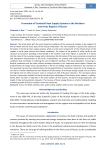
Formation of Territorial Heat Supply Systems in the Northern and Arctic Regions of Russia
Статья научная
The article deals with the most important problems of the communal complex in the subjects of the Far North and the Arctic zone of the Russian Federation. The main attention is paid to the aspects of formation of territorial heat supply systems, which are the basic components of the infrastructure of life support in harsh polar natural and climatic conditions. The impact of the growth of utility tariffs on the structure of consumer spending of households in the northern and arctic regions is assessed. It is shown that the state of the municipal energy sector determines the formation of the socio-economic environment and investment attractiveness of the Arctic municipalities. Its renewal and modernization are the main conditions that contribute to reducing the rate of migration outflow of the local population, increasing industrial production and the state military–strategic presence in this important macro-region. Despite the predominance of energy sector specialization in the list of leading industrial enterprises, the presence of the necessary fuel and raw materials base and increased inflow of investment resources in the energy sector, there is further obsolescence and reduction of fixed assets of municipal energy supply units as well as the highest level of utility consumer costs in comparison with all-Russian indicators. The conclusion about the loss of previously available territorial infrastructure advantages of the Russian Arctic regions is substantiated: there has been a reduction in the total number of heat sources, territorial energy production, the length of heat communication networks. The increase of these energy threats is a factor limiting the socio-economic growth of Russia’s northern and arctic territories.
Бесплатно

Статья научная
The paper considers the issues of ethno-demographic development and settlement of small-numbered indigenous peoples of the Arctic zone of the Russian Federation in the period between the 2002 and 2020 population censuses. The article analyzes the current state and development of the ethno-economic areas of the Arctic zone of the Krasnoyarsk Krai, assesses the potential for the development of traditional economic activity of indigenous peoples and identifies hindering factors. It is shown that the key mechanism for achieving the goals of sustainable development of traditional economic activities in the Arctic region is an active balanced cluster approach adapted to the specifics of ethno-economic habitats of indigenous minorities of the Arctic. The prerequisites and prospects for creating an ethno-economic cluster in the Arctic zone of Krasnoyarsk Krai are assessed. Promising areas of investment development of socio-economic potential and cooperative relations of traditional economic activities of indigenous minorities are identified. The results of the cluster formation will be increase in the degree of processing and in the output of traditional economic activities, increase in employment and improvement of the standard of living of indigenous small-numbered peoples, transformation of traditional economic activity into a full-fledged sector of the economy of the Arctic zone of the Krasnoyarsk Krai.
Бесплатно

Impact of Economic Factors on Sustainability of the Fishing Industry of the Russian Arctic Zone
Статья научная
The analysis of the influence of actual external and internal economic factors on the work of the fishing industry in general and in the Arctic zone in particular shows the stability and ability of the Russian fishery complex to fulfil the tasks of implementing the Food Security Doctrine of the Russian Federation and other strategic regulatory documents. Timely work of the state legislative bodies in decision-making at all levels of management in the current situation is noted. Key economic factors (export and import, supply and demand, shipbuilding and ship repair, logistics, etc.) that have direct and indirect impact after the introduction of sanctions are considered. The paper analyses the key performance indicators of the Russian fishery complex, provides an analytical review of the demand for fresh-frozen fish in the North-West region, the relationship between the population’s income and the consumption of fish and fish products in the country. The primary role of scientific support of the fishing industry in the successful realization of the general goals and achievement of the set tasks is emphasized. An assumption about opening of new logistic routes and expansion of geography of fish and fish products supplies to African and Latin American countries, countries of Asia-Pacific region is made on the basis of assessment of modern international relations. It is determined that the construction and repair of the fishing fleet in modern conditions is of concern to the state structures and fishing business community. The measures of state support of shipbuilding plants of the country are considered, the proposal on creation of ship repair cluster in the Arctic zone of the Russian Federation is substantiated.
Бесплатно


